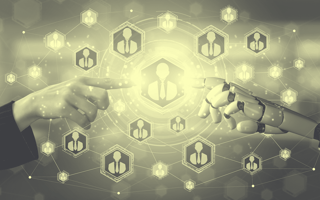The past year has brought some of society’s greatest inequalities to light. But it has also provided the space for both individuals and organizations to reassess currently accepted processes.
In the recruitment sphere, researchers at the University of Oxford have shown that levels of discrimination haven’t changed since the 1960s, while more than a third of workers believe COVID-19 has delayed diversity efforts in their company.
Businesses know that they need to take a more active role in shaping fairer, more inclusive environments, but what if they’re searching for solutions in the wrong place?
Artificial intelligence has long been positioned as a resource that can drive diversity forward because it has the potential to remove unconscious human bias and provide insights about a company’s make-up that might otherwise go unnoticed. Still, AI is only as neutral as the data and the logic it’s applied to.
In October of 2018, Amazon had to abandon its AI recruiting tool after it was discovered that the model had been inadvertently programmed to favor male applicants because the data was so heavily skewed by men — who make up a disproportionate amount of the tech industry’s workforce. Rather than neutralize the skewed demographics, Amazon’s tool gave male candidates greater visibility.
AI in recruitment thus needs to be powered by a different kind of data than currently available. Organizations trying to be fairer — in other words, oriented toward skills and results and providing equal opportunities regardless of gender, socio-economic background or location — will have a very hard time working with the existing recruiting solutions as well as their available data points.
Current AI Applications Are Falling Short
AI alone is not sufficient to eliminate unintentional discrimination from processes. If businesses don’t realize how to operationalize fairness in AI, they leave themselves exposed to a number of biases that can be replicated and generate undesirable outcomes.
Generally speaking, there are two types of biases that businesses need to be aware of:
- Intentional bias around protected classes like race, age and gender.
- Unintentional bias in variables that serve as proxies for a protected class. (For example, data about home ownership could convey disparities around race.)
Even the natural language processing (NLP) element of AI has been shown to conserve biases. Microsoft employees found that word embeddings — a visual map of words and their learned meanings — complied with negative stereotypes. For instance, the search analogy “man:woman, doctor:” produced the term “nurse.”
In a recruitment scenario, these associations could mean that candidates are recommended positions that are discriminatory based on the language they use on their resume. Web embeddings are trained on billions of words and contexts shared freely online, so the data input is far from neutral or representative. In fact, it’s plain wrong.
Another obstacle in AI application is the distinct lack of diversity among the teams building the tech. The field is overwhelmingly white and male: According to the Guardian, more than 80 percent of AI professors are male, only 10 percent of AI researchers at Google are female, and there is little data on trans workers or other gender minorities in AI.
Considering that the tech is playing an increasingly important role in society and across businesses, companies have to acknowledge that AI’s ability to replicate diversity is limited if its pool of creators are not diverse themselves.
Structured Data Drives a Fairer Recruitment Cycle
For a recruitment sphere that’s genuinely more fair, teams have a responsibility to use data-driven systems throughout the full talent lifecycle. This may sound counterintuitive, but it’s possible with the right data — meaning data that isn’t personal. By anonymizing recruitment data, organizations can remove unintentional proxy indicators like location or education and pave the way for more equal access to available positions.
Ultimately, recruiters need to know how people work, how they think and how they fit within a team. Models have been developed for years to identify precisely these traits. Using and developing those models will supply a more telling and unbiased depiction of a candidate than conventional resume details.
Luckily, there are tools that harness AI to provide an objective rendition of those characteristics: Ideal’s platform is trying to use AI to filter applicant databases and remove variables that commonly lead to biased screening. Meanwhile, Joonko recreates talent pipelines by applying AI to a qualified, diverse and skills-sourced pool of applicants.
If the data is oriented around structured and equally assessed data points, the hiring cycle will be more balanced from the very beginning and will emanate that equality throughout the later phases. One example is the way that data can help make the interview stage more impartial. AI can use quality data to generate prompts that focus only on the needs of the job and don’t stray into personal questions that could provoke discrimination in the selection process.
Honing in on skills data can give businesses a noticeable advantage in the long run too. A World Economic Forum report states that 54 percent of all employees will require reskilling and upskilling by 2022 — a figure that is likely even higher because of the COVID-19 pandemic. In anticipation of the Great Reset, people are looking to companies with an environment of constant learning and professional development. Businesses that don’t provide the opportunities are at risk of losing interest from prospective hires — as well as existing employees.
The next generation of structured data will offer a deeper understanding of the strengths in a workforce, as well as the gaps that can be targeted internally and through recruitment that doesn’t just include a skill or ability perspective, but from a 360-degree analysis of a candidate’s personality, professional culture, leadership and team match.
Being aware of these gaps can help businesses develop more in-house opportunities to reskill and upskill, and subsequently find and retain fulfilled talent for longer.





